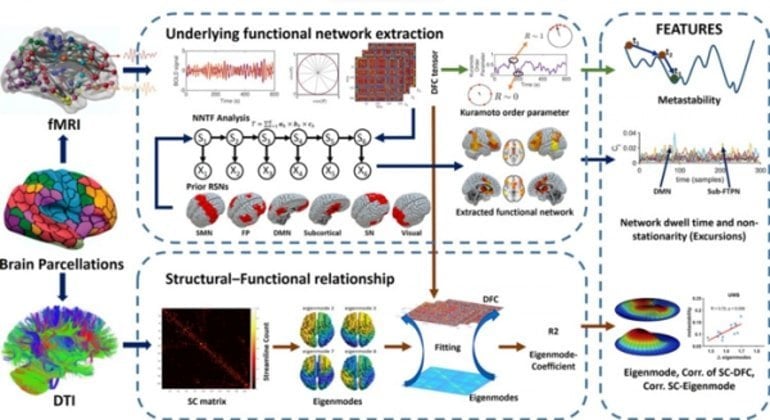
The team of researchers from the University of Liège (GIGA Consciousness Research Unit, Coma Science Group, Faculty of Medicine) and the University Hospital of Liège (Belgium), the Universitat Pompeu Fabra (Spain), the Vrije Universiteit Amsterdam (Netherlands), among others, assessed the states of functional brain networks as a marker of consciousness in order to potentially distinguish between patients in unresponsive wakefulness syndromes (UWS) and the state of minimal consciousness (MCS).
“In contrast, patients in a minimally conscious state show minimal signs of awareness such as following movements with their eyes or moving a finger when asked.” .The study included 34 healthy controls, 30 minimally conscious patients and 14 unresponsive awake patients.We used state-of-the-art techniques to assess different aspects of brain structure and its relationship to network dynamics,” says Jitka Annen, “and demonstrated that these techniques were sensitive in detecting clinically relevant differences in the diagnosis of patients with the minimally conscious state and unresponsive wakefulness syndrome”.“We observed that, compared to the minimally conscious state, patients with unresponsive wakefulness syndrome showed less activity in functional networks, reduced metastability (a state of stable functional connectivity different from the natural steady state) and increased coupling of functional connectivity to the structural framework,” explains Aurore Thibaut, FNRS researcher at GIGA Consciousness and Coma Science Group.“This new approach also revealed a brain network that most differentiates between unconscious and conscious states – a network encompassing subcortical regions and frontotemporoparietal cortical areas.”.These findings support previous ideas about the mechanisms underlying the loss and recovery of consciousness, such as the global neural workspace theory and the mesocircuit hypothesis, which suggest that the failure to recover consciousness is related to a loss of connectivity between subcortical and frontoparietal brain areas, as well as a loss of the range of functional network states.Disruption in structural–functional network repertoire and time-resolved subcortical fronto-temporoparietal connectivity in disorders of consciousnessIdeas such as the global neuronal workspace (GNW) and the mesocircuit theory hypothesize that failure of recovery in conscious states coincide with loss of connectivity between subcortical and frontoparietal areas, a loss of the repertoire of functional networks states and metastable brain activation
We adopted a time-resolved functional connectivity framework to explore these ideas and assessed the repertoire of functional network states as a potential marker of consciousness and its potential ability to tell apart patients in the unresponsive wakefulness syndrome (UWS) and minimally conscious state (MCS)By analysing time-resolved functional connectivity from functional MRI data, we demonstrated a reduction of metastability and functional network repertoire in UWS compared to MCS patients